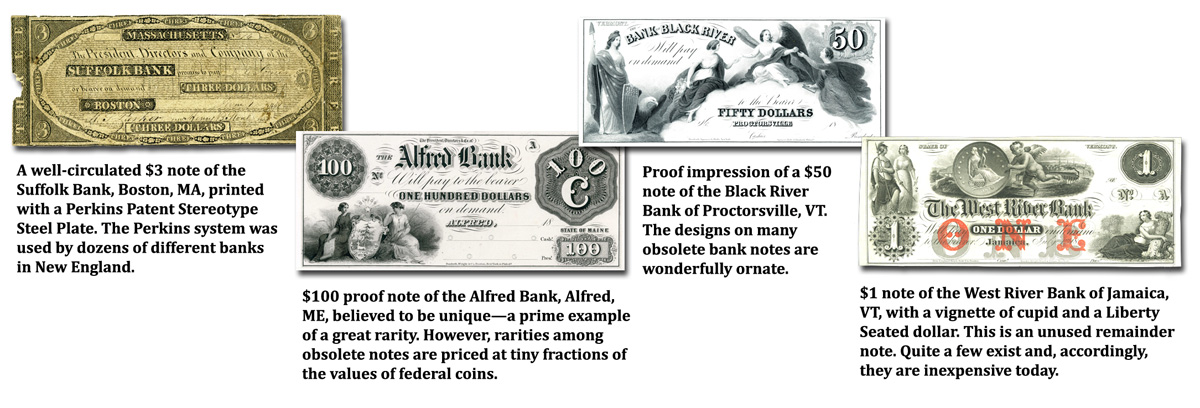
Such notes were made by private printing and engraving companies. The most famous early one was conducted by Jacob Perkins of Newburyport, Massachusetts, who devised the siderographic system for reproducing engraved images on steel plates so that one steel plate could be used to make many others, a saving of time. He also had the patent Stereotype Steel Plate, in which a matrix was made by forming different elements with designs, and inserting slugs with the names of a state, town and bank. In that way bills could be produced quickly and inexpensively.
The most popular denominations in that era were the $1, $2, $3, and $5, followed by the $10 and, at a distance, the $20. There was not a great deal of activity in $50 and $100 bills, except by exchange houses and banks. In 1840, for example, a $1 note represented a day’s wage. Very few people had substantial assets. It is interesting to observe that the United States of America considered the popular $3 denomination in 1862 when it began issuing its own Legal Tender Notes. A provision was made in the design for a $3 value but none were ever issued. Later, the phrase “queer as a $3 bill” became popular with few people realizing that at one time $3 notes were widely accepted in circulation.
Today the collecting of notes from this era can be a fascinating pursuit. Beginning in the 1810s designs often included scenery such as rivers, canals, views of towns, and the like. In the next decade, continuing through the 1850s, notes became increasingly ornate, often with goddesses, eagles, scenes of railroads, farming and more. Virtually all activities in America from shipbuilding to blacksmithing to feeding chickens were depicted. Today such notes are generally inexpensive, and many nice examples can be purchased for in the tens of dollars, this being for notes that were signed in ink by bank presidents and cashiers, serially numbered, and remain today in grades such as Very Fine. There are no standard type guides, but with some experience, also checking auction realizations and fixed price offerings, values can be approximately established. A good plan is to sign up with a dealer specialist in Obsolete notes, such as a member of the Professional Currency Dealers Association (PCDA). The Internet has many such sites, but be sure to look for the PCDA logo, as there are many offerings, especially on Internet auction sites, by people who have no knowledge of what they are doing or are selling fakes or overpriced notes.
Curiously, among such notes an Uncirculated note, one never signed or issued, is usually worth quite a bit less than one that has been used in commerce and is worn. Uncirculated notes, typically called “remainders,” often are from large groups of bills that were on hand when banks closed or changed to a new currency system. Four-subject sheets of these notes were sold to numismatists, who cut them apart, with the result that many are common today.





